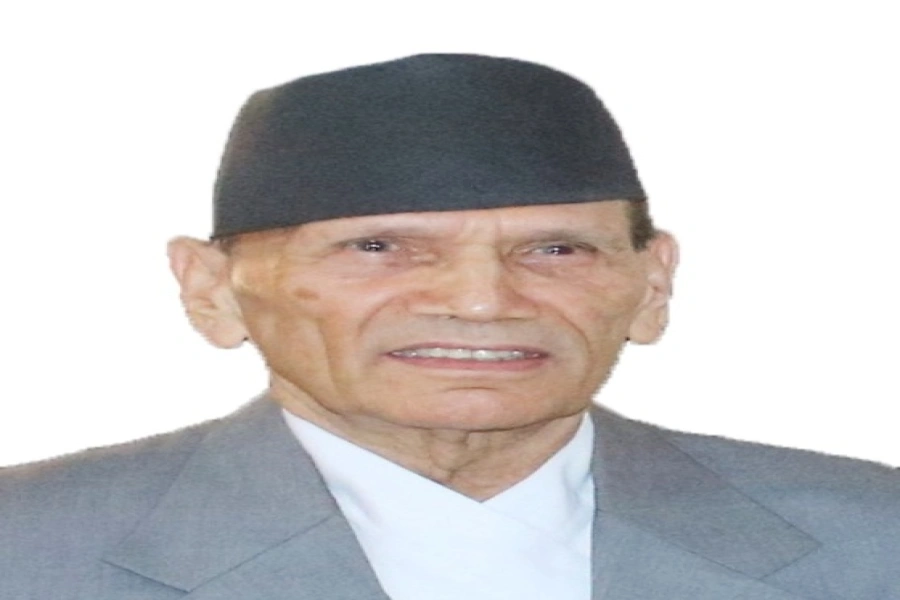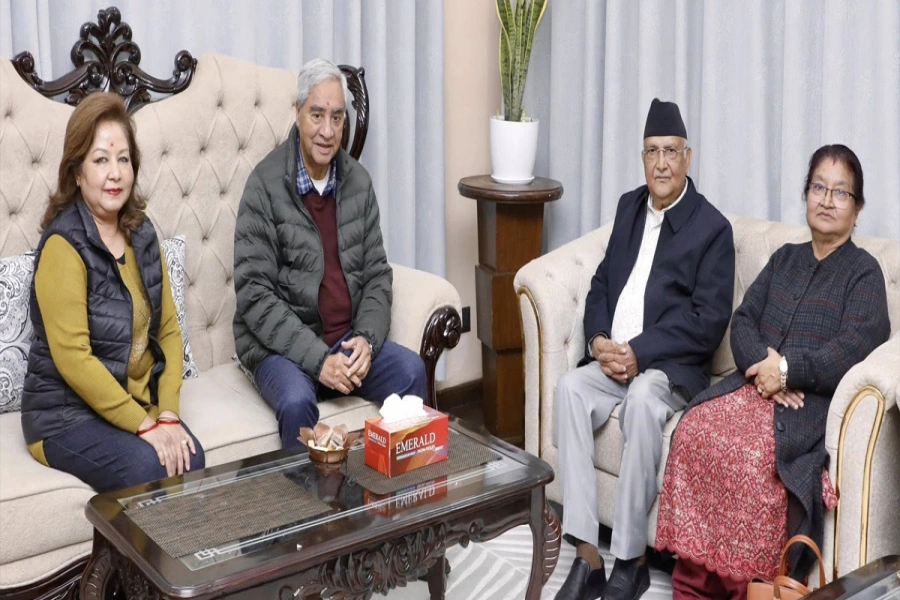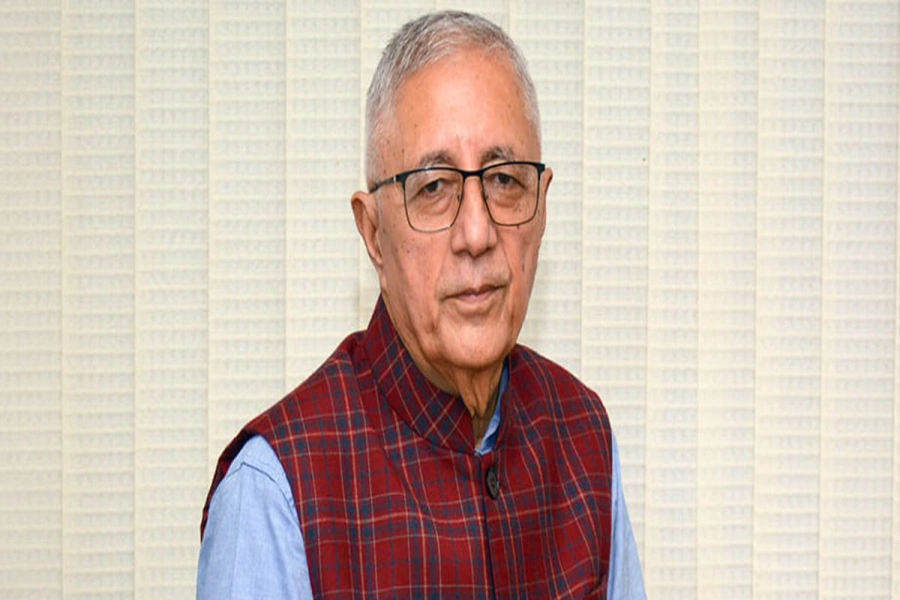Photo Courtesy: Muna Bhadel and Kapil Mani Dixit's FB
There is no limitation for inspiration. An artist can derive inspiration from anywhere, whether it is from inside his/her house or outside their house. The ongoing two exhibitions at Tara Gaon Museum, Bauddha is one such example.
Visual artist Kapil Mani Dixit who uses nude human figures as his major motif has got his motivation for the exhibition ‘Nude Carpet’ from an object inside his studio—an old carpet. According to Dixit this is his innovative work where he has used an old carpet as a surface of his painting. The idea behind this work is to signify the importance of reusing and minimizing waste. The carpet which he has used was in his studio for more than a decade. It had lots of stains, it was quite old and he spilled lots of colors on it. Dixit says he was thinking of getting rid of it but when he started seeing interesting lines and patterns on it, he thought of converting it into an art piece. The patterns were very feminine; therefore he started enhancing his spilled color lines in the form of a female nude.
Meta buys AI wearables startup Limitless

He adds, “However, at the same time I kept the original print of the carpet exposed without covering it with the paint. I did not want to change the texture, color, and the prints of the carpet into a completely new version. My idea is to showcase the carpet as it is -with a minimal artistic touch.”
Moreover, visual artist Muna Bhadel’s exhibition ‘The Missing Souls’, is inspired by her surroundings— Dapcha Bazaar—where she spent most of her childhood. According to Bhadel, she became aware of her environment after reading ‘Karnali Blues’ by Buddhi Sagar.
In the book, the writer narrates about a busy business point of the main bazaar—Khatashee, and how it’s charm faded away with time. Muna says Dapcha Bazaar is the place where she spent her childhood which now has partly lost its identity, similar to Khatashee as mentioned in the book. About the Dapcha Bazaar, she shares, “The Bazaar is similar to Bhaktapur and Patan Durbar Square as it represents Newari-Malla period architecture which was settled after Prithvi Narayan Shah conquered Kathmandu Valley.”
Moreover, the extension of the highway and period of civil war in Nepal has totally changed the Bazaar which has directly affected the liveliness of the Bazaar. She adds, “Twenty years ago it was one of the busiest business points but now neither there is a crowd of people nor liveliness of the Bazaar. People have shifted and settled to other areas for a secured life. The Bazaar grew along with me during my childhood, vibrant and lively but has died by my adulthood.”
Kapil's Nude Carpet is the showcased from May 12 as the second edition of museum's ongoing series 'Object in Focus' that aims in exhibiting a concept that would allow viewers and also the artists to look, see and think contemporary art in a completely different perspective. As such Kapil's unusual canvas and it's larger than life-size artwork definitely make the viewers think about artistic inspiration.
Then, Muna’s works is a nostalgic recall of her subconscious memories of the Dapcha Bazaar which can start a conversation on the issues of migration in Nepal. The works have been created in 2nd Taragaon Open Studio Artist where she worked since the first week of April.
If you want to witness these artists' artwork then you can visit the exhibition that continues till May 21.






































